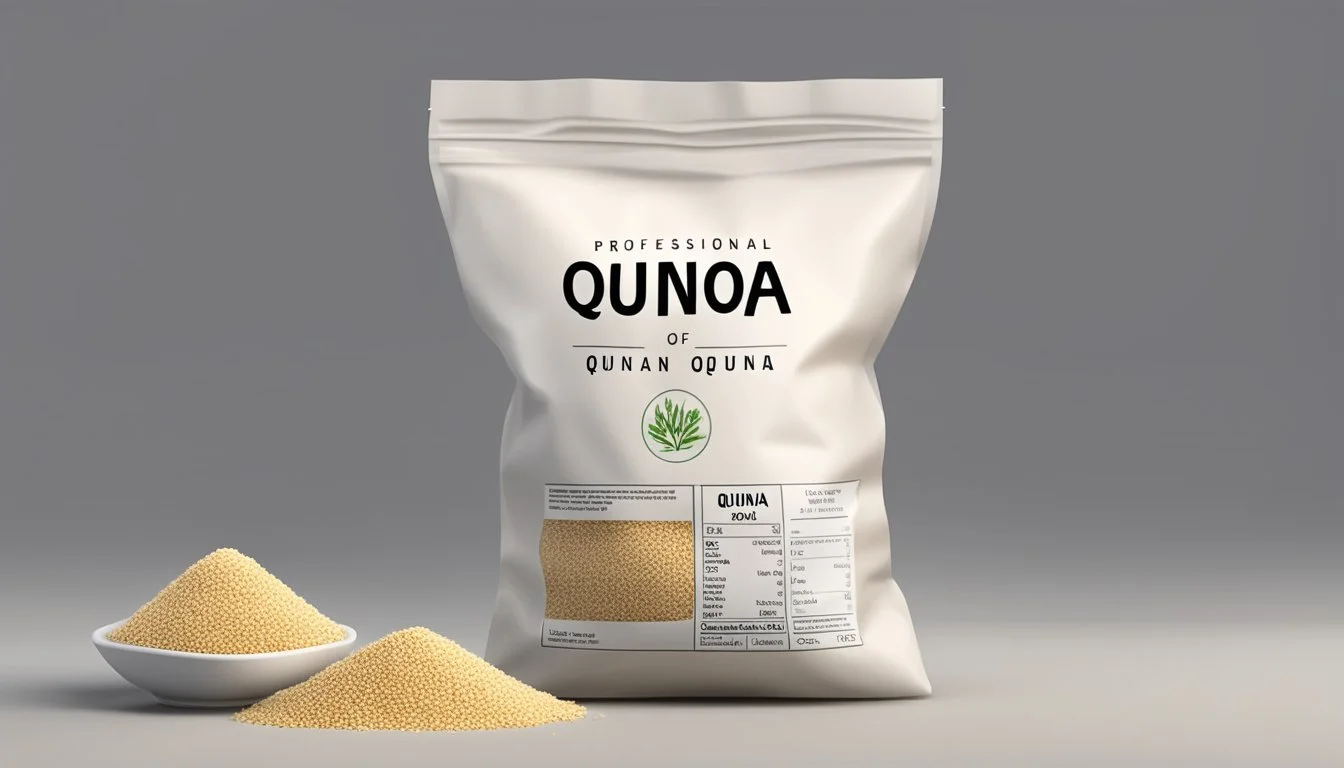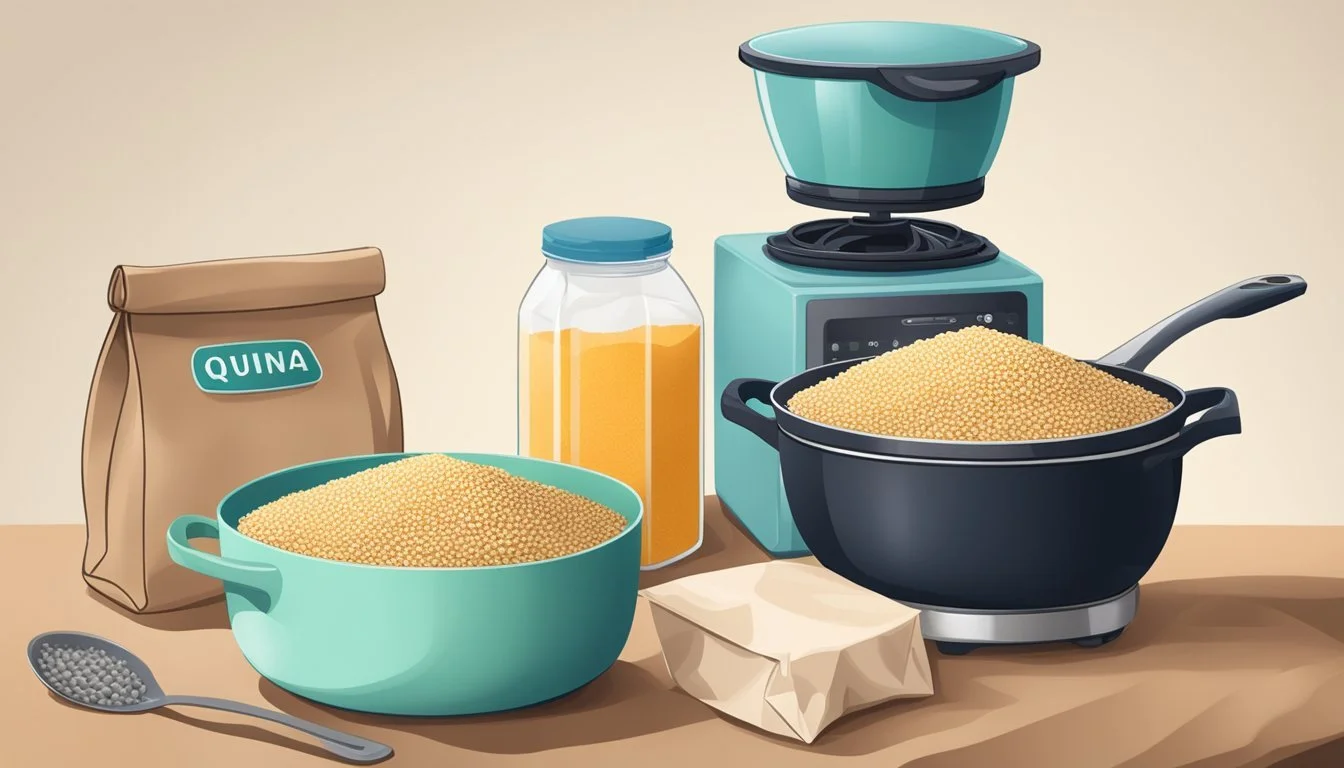Is it Safe to Prepare Expired Quinoa?
Unpacking the Risks and Guidelines
When it comes to pantry staples, quinoa is often praised for its nutritional benefits and versatility in cooking. As a durable grain, it typically features a long shelf life that can extend beyond its printed expiration date. However, consumers frequently question whether it is safe to consume quinoa once it has technically expired. It's crucial to understand the difference between best by dates, which often indicate peak quality, and true expiration dates, which suggest a product may no longer be safe to consume.
While the shelf life of quinoa is generally quite generous, allowing it to remain edible for months past its best by date, it is important to assess its condition before preparation. Proper storage is key to extending the life of quinoa; it should be kept in a cool, dry place away from moisture and direct sunlight to maintain its quality. If stored under ideal conditions, quinoa may remain safe to eat beyond the date on the package, but it should always be examined for signs of spoilage such as an off smell or the presence of mold before use.
The safety of consuming expired quinoa ultimately depends on its storage and condition. There is a consensus that if quinoa shows no signs of spoilage, it is likely safe to consume past its expiration date. However, if there are any indicators of deterioration, it is best to err on the side of caution and avoid ingesting the grain. Consumers must act judiciously to ensure their meals are not only delicious but also safe.
Understanding Quinoa and Its Nutritional Value
Quinoa is renowned for its impressive nutritional profile, often classified as a superfood due to its dense concentration of vitamins, minerals, and other healthy nutrients.
Classification of Quinoa
Quinoa is a pseudocereal, not a true cereal grain like wheat or rice, but shares similar cooking properties. It’s a seed from the Chenopodium quinoa plant and is naturally gluten-free. Quinoa is revered for its complete protein content, meaning it contains all nine essential amino acids that the human body cannot produce on its own. Additionally, it's a source of complex carbohydrates and fiber.
Health Benefits of Quinoa
Quinoa offers a multitude of health benefits:
Protein: It's one of the few plant foods that offer a complete set of amino acids, making it an excellent protein source, particularly for vegetarian and vegan diets.
Fiber: High in dietary fiber, quinoa promotes healthy digestion and can aid in weight management.
Iron and Magnesium: Rich in iron, necessary for oxygen transport in the blood, and magnesium, vital for many body processes, including nerve function and blood sugar control.
Vitamins and Minerals: It includes a range of vitamins such as B-vitamins and Vitamin E, and minerals like manganese, phosphorus, copper, zinc, and potassium.
Nutritionally Dense: Considered a superfood, quinoa has a high nutrition density, providing more vitamins, minerals, and other healthy nutrients per calorie than many other foods.
Shelf Life Determination
Determining the shelf life of quinoa is crucial to ensure its safety and nutritional integrity. Consumers and manufacturers alike rely on accurate shelf life estimation to prevent food waste and to guarantee quality.
Factors Affecting Quinoa Shelf Life
Shelf life of quinoa is influenced by several factors that include storage conditions such as humidity, light, and temperature.
Humidity: Quinoa should be stored in a dry environment as high humidity can lead to moisture absorption, which may cause mold growth and spoilage.
Light: Exposure to light can degrade the quality of quinoa by affecting its nutritional content. Storing quinoa in a dark place helps maintain its quality.
Temperature: A cool and consistent temperature is ideal for prolonging the shelf life of quinoa. Fluctuations in temperature can lead to a reduced shelf life and spoilage.
Incorporating proper storage practices is crucial for extending the shelf life of quinoa. An airtight container in a cool, dark, and dry pantry is recommended.
Identifying Expiration Date on Packaging
The expiration date on packaging serves as a guideline to determine the shelf life of quinoa.
Manufacturers often mark quinoa with a best by date rather than a true expiration date, which conveys peak quality rather than safety.
The date is typically found on the packaging or label and should be checked before purchase and consumption.
Examining the packaging for this date ensures consumers are aware of the estimated period during which the quinoa is expected to retain its quality.
Proper Storage Techniques
To preserve the quality and extend the shelf life of quinoa, one must employ proper storage techniques for both uncooked and cooked quinoa. This section explores the methods necessary to keep quinoa in optimal condition.
Storing Uncooked Quinoa
When storing uncooked quinoa, the environment is critical. One should store quinoa in a cool, dry place such as a pantry to prevent exposure to heat and moisture, which can degrade the quality. Here are specific steps to ensure proper storage:
Airtight Container: Utilize airtight containers like sealed Mylar bags or mason jars to protect quinoa from oxygen and pests.
Labeling: Clearly label the container with the date of storage to track how long the quinoa has been stored.
Preserving Cooked Quinoa
Once quinoa is cooked, its shelf life decreases, but with proper preservation techniques, it can be consumed safely after storage.
Refrigeration: Store cooked quinoa in the refrigerator in an airtight container to prevent it from absorbing other odors and tastes. It typically lasts for 6-7 days when refrigerated properly.
State Container Duration Cooked Quinoa Airtight container 6-7 days
Freezing: For longer-term storage, cooked quinoa can be frozen. To freeze cooked quinoa:
Cool the quinoa completely before packaging.
Place the cooled quinoa in airtight freezer-safe containers or bags.
Label each container or bag with the date before freezing.
Cooked quinoa can last for 8-12 months in the freezer if stored correctly. Remember to thaw frozen quinoa in the refrigerator prior to use.
Detecting Signs of Spoilage
When assessing whether quinoa is still safe to consume, one must be attentive to particular signs of spoilage, which can be recognized through visual inspection and smell tests. Cooked and uncooked quinoa each reveals tell-tale signs that indicate spoilage.
Visual and Textural Changes
For uncooked quinoa, the primary visual indicator to look for is discoloration or any changes in color. Quinoa comes in a range of hues, but any presence of unexpected dark spots or a significant change from its natural shade could signal spoilage. If the grains appear discolored or have a powdery substance on them, they should not be used.
Regarding cooked quinoa:
Mold: Any visible mold, which can appear as fuzzy spots in various colors, is a clear sign of spoilage.
Texture: If cooked quinoa has become excessively mushy or slimy, this may indicate bacterial growth and spoilage.
Odor Indicators
The smell test plays a critical role in determining the edibility of both cooked and uncooked quinoa. Quinoa that has gone bad will often emit an unpleasant, sour, or rancid odor. While fresh quinoa has a nutty scent, any foul smell is a strong indicator that the quinoa is no longer safe to eat and should be discarded.
Health and Safety Considerations
When discussing the safety of consuming expired quinoa, one must consider both the health implications of such consumption and the food safety practices that could minimize potential risks.
Implications of Consuming Expired Quinoa
Expired quinoa, if not stored properly, may exhibit mold growth, produce an off smell, or appear discolored. Consuming spoiled quinoa poses a food safety hazard, with potential risks including food poisoning from bacteria such as salmonella or E. coli. Gluten intolerant individuals may need to be especially cautious, as they require strict dietary compliance and contamination or spoilage could exacerbate their health issues.
Though expired quinoa with no signs of spoilage may not harm heart health immediately, the reduced nutritional value over time, specifically the loss of proteins and minerals due to oxidation, could impact long-term heart health maintenance.
Food Safety Practices
Proper storage of quinoa is paramount to extending its shelf life past the expiration date and includes keeping it in a cool, dry place, away from sunlight and moisture. The following list outlines essential storage practices:
Airtight containers or vacuum-sealed bags to minimize moisture and oxidization.
Cool pantries or cupboards, with stable temperature conditions.
Regular inspection for spoilage signs before preparation that includes:
Signs of Spoilage Action Required Mold Discard immediately Off smell Do not consume; dispose of the quinoa Discoloration Discard to prevent potential health risk
For individuals preparing quinoa, whether expired or not, following food safety guidelines is crucial. This means washing hands thoroughly, cleaning all surfaces and utensils before use, and cooking quinoa to the correct temperature to kill any potential pathogens.
Maximizing Quinoa's Usability
To maximize quinoa's usability, understanding how to extend its shelf life and effectively reuse leftovers is essential for both safety and culinary value. Utilizing proper storage methods and creative repurposing can ensure quinoa remains a versatile component of a gluten-free diet.
Extending Shelf Life
Uncooked quinoa has a significant shelf life when stored correctly. As a dry grain, quinoa will remain safe to consume for approximately:
2-3 years past its expiration date if kept in a cool, dry place away from sunlight and moisture.
To extend its shelf life, one should:
Store in an airtight container to prevent exposure to air and pests.
Keep in a cool and dark environment such as a pantry.
Consider freezing quinoa to significantly lengthen its usability, especially if the climate is humid or if infrequent usage is anticipated.
Storage Method Expected Shelf Life Pantry (sealed) 2-3 years past expiration Refrigerator Not recommended for uncooked quinoa Freezer (cooked) 6-12 months after cooking
Reusing Leftover Quinoa
Cooked quinoa, when stored properly, can last:
3-5 days in the refrigerator, or up to a week if conditions are optimal.
For leftover cooked quinoa, one can:
Freeze it in single portions, allowing for easy thawing and reheating.
Incorporate into a variety of recipes such as baking, soups, and salads for added texture and nutrition.
Reheat only once to maintain quality, ensuring it reaches the proper internal temperature before consumption.
Best Practices for Reusing Leftover Quinoa:
Cool down quickly after cooking and store in the fridge within two hours.
Use airtight containers when freezing to prevent freezer burn.
Enhance taste by reheating with a sprinkle of water or broth to prevent dryness.
Creative Uses in Recipes:
Baking: Use as a gluten-free alternative in bread, muffins, and pancakes.
Soups: Add for extra protein and a slight crunch.
Salads: Mix with vegetables and dressing for a healthy, quick meal.
Employing these strategies can not only ensure that quinoa retains its desirable qualities but also expands its role as a nutrient-dense food in a variety of dietary preferences.
Dealing with Quinoa Pests and Contaminants
The optimal storage of quinoa is crucial for prevention of pests and the avoidance of microbial contaminants like mold. Understanding how to prevent infestations and handle any contamination is vital for safe quinoa consumption.
Preventing Infestations
To safeguard quinoa from insects, storing the grain in a cool and dry place is essential. One should transfer quinoa to an airtight container immediately after purchase to protect it from pests such as weevils that are often found in pantry environments. Regularly inspecting pantry areas for signs of pests can prevent infestations from spreading.
Check for pests: Before sealing quinoa away, inspect it thoroughly for any live insects or larvae.
Storage conditions: Place the airtight container in a cool, dry area to discourage the growth of mold and the attraction of pests.
Handling Contaminated Quinoa
If quinoa shows signs of contamination, such as mold growth or rancid smells, it's crucial to discard the product. Should the issue be identified as an infestation of insects within the pantry:
Remove all food items and thoroughly clean the shelves.
Inspect other foods for contamination and dispose of any affected items.
After cleaning, store quinoa in sealed containers and keep watch for future signs of pests or mold.
Dispose of contaminated quinoa safely away from food preparation areas, and sanitize any surfaces or containers that have been in contact with it.
Frequently Asked Questions
When dealing with quinoa that is past its expiration date, consumers often have concerns about its safety and potential uses. The following subsections address common inquiries regarding this topic.
Can You Freeze Cooked Quinoa?
Cooked quinoa can be frozen to extend its shelf life. Once cooked, it should be allowed to cool to room temperature, and then it can be transferred to an airtight container or freezer bag. Properly stored, cooked quinoa can last for 6 to 12 months in the freezer.
How to Tell If Quinoa Is Bad?
Quinoa that has gone bad will exhibit signs such as an unpleasant smell, a visibly moldy appearance, or a damp texture. If the quinoa has any changes in color or if there are bugs present, it should be discarded immediately.
Alternative Uses for Expired Quinoa
If the quinoa is past its expiration date but shows no signs of spoilage, it may still be unusable for traditional cooking. Such quinoa can be ground into flour to be used in baking; however, the quality and taste may not be as good as with fresher quinoa. It is recommended to use fresh quinoa flour for better results in baking.










